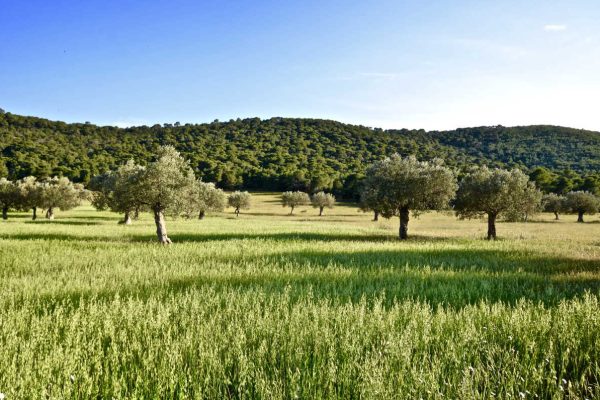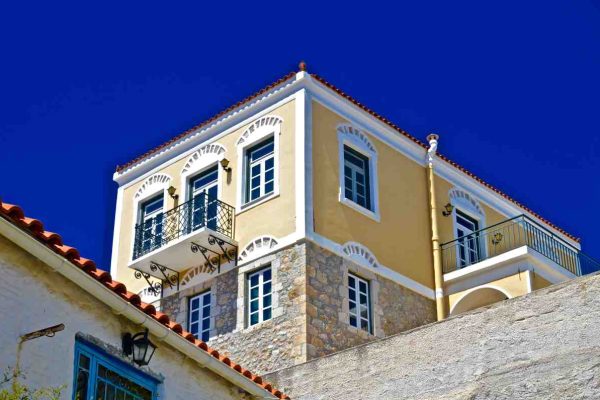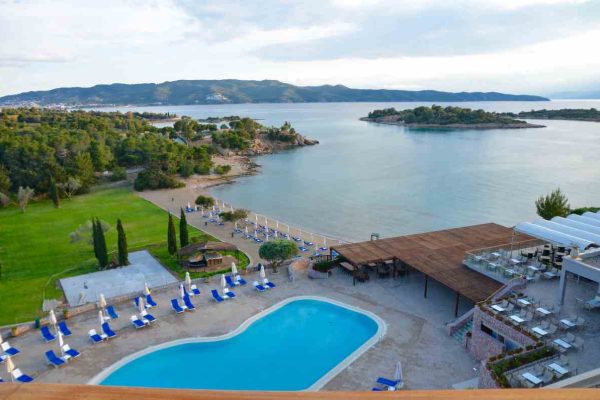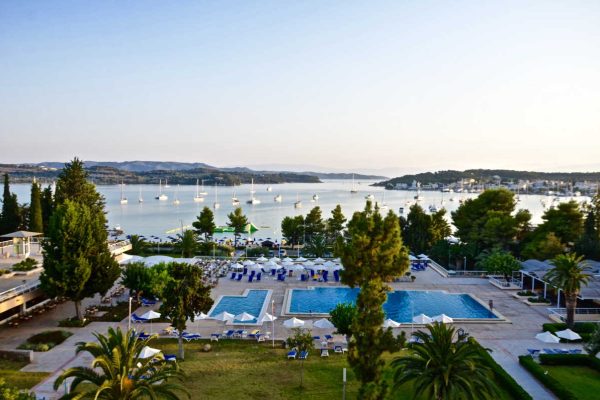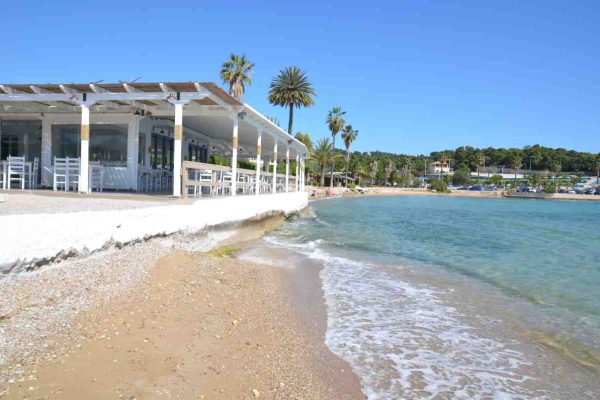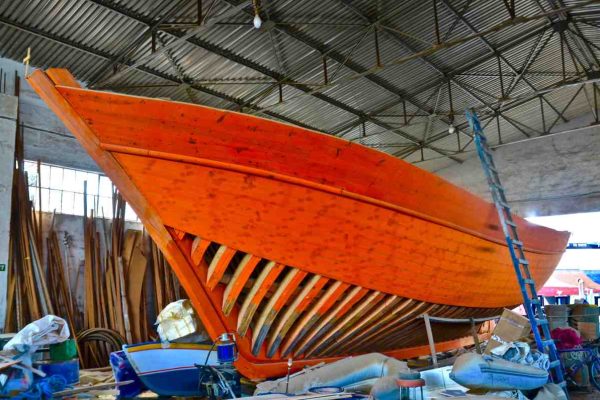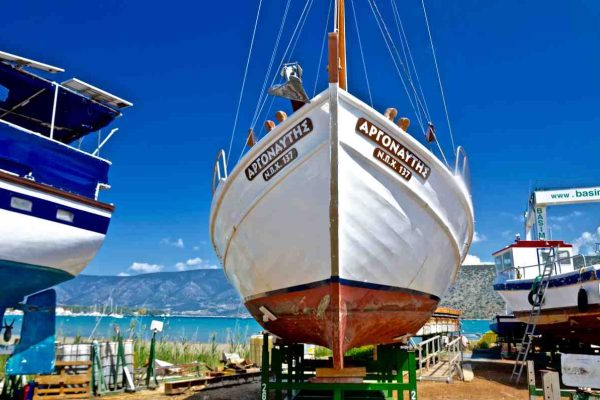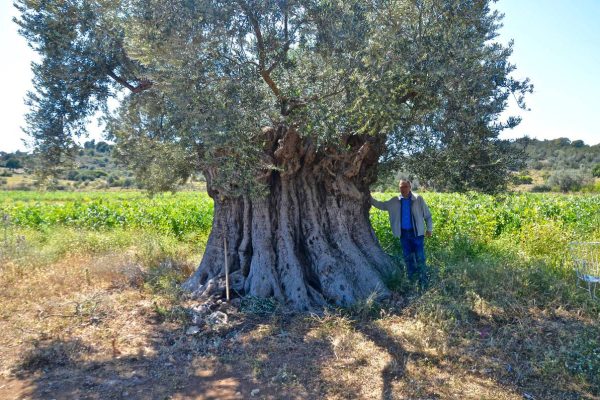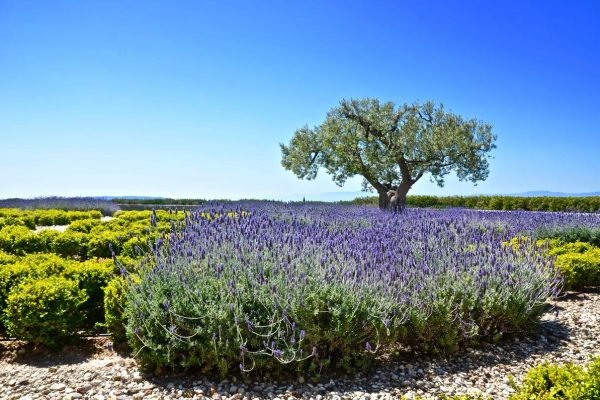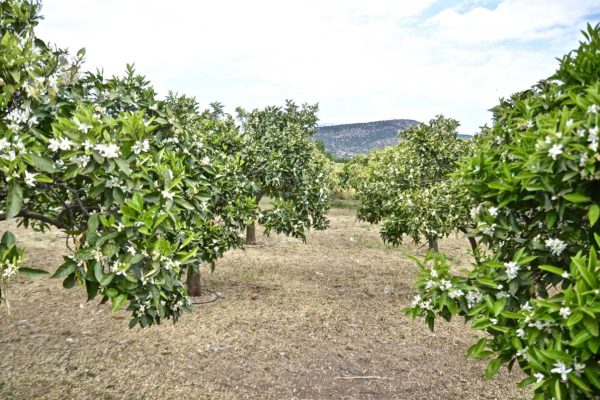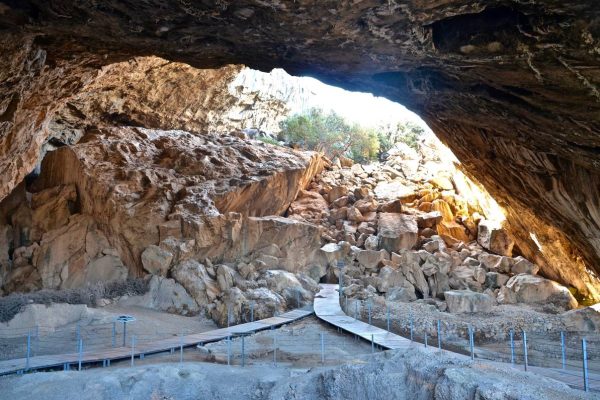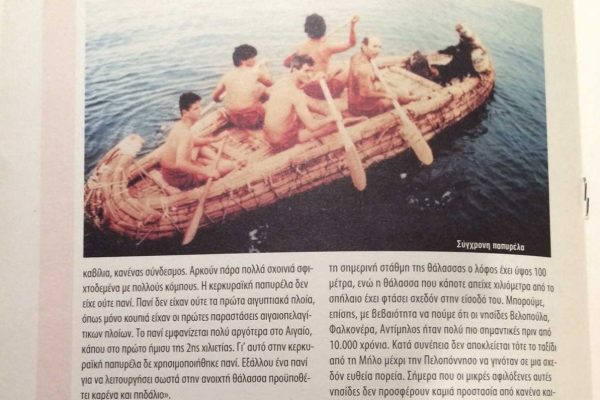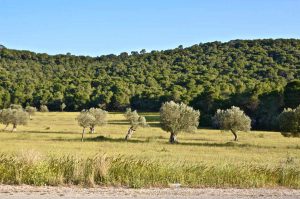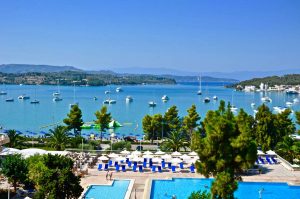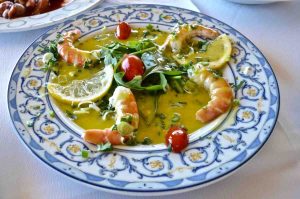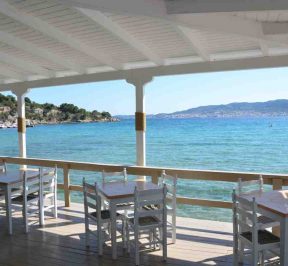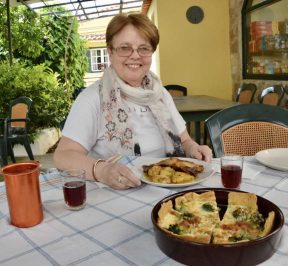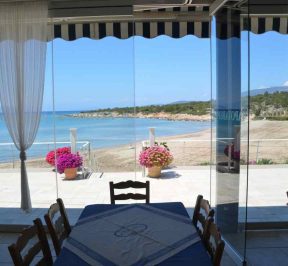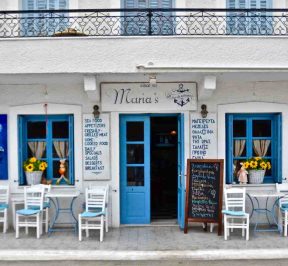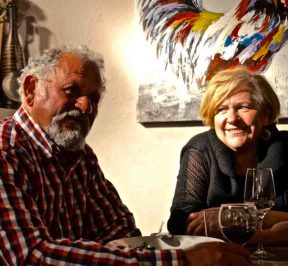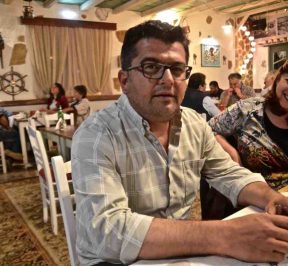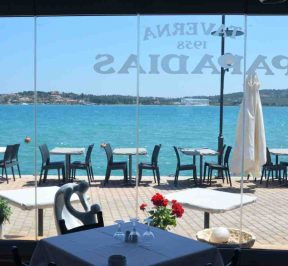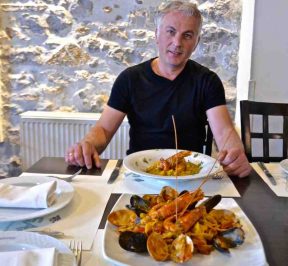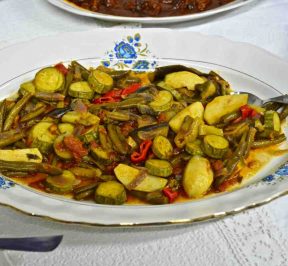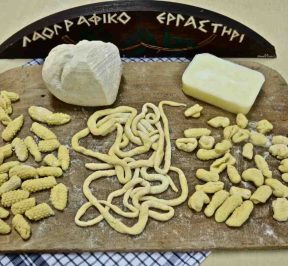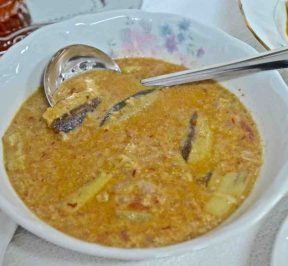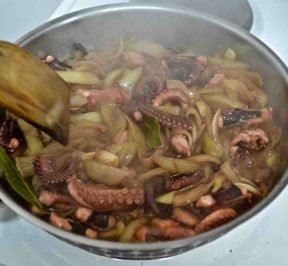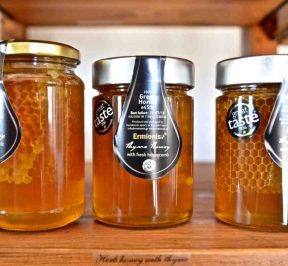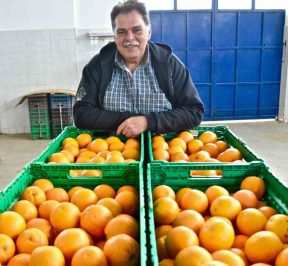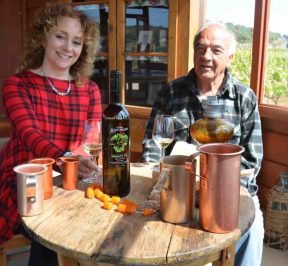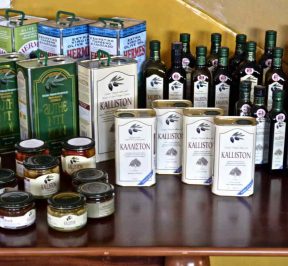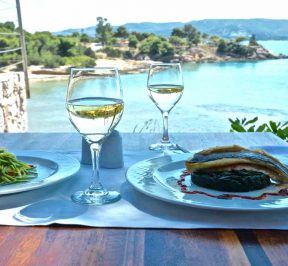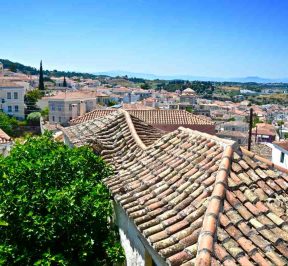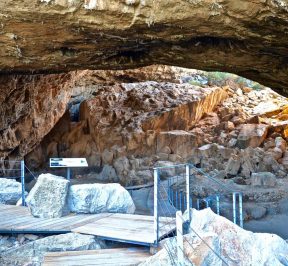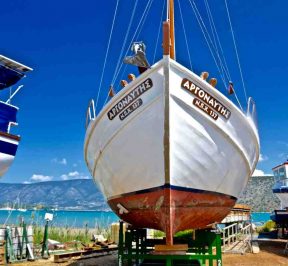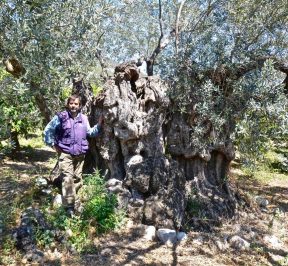Place - History of Ermionida
The first traces of human life in Hermione are located in Franghti cave, on the north coast of the bay of Ermionida Valley in the Peloponnese, which is one of the most important prehistoric sites in Greece and one of the most important caves in Europe. There are indications that the cave was continuously inhabited from 20.000 to 3.000 BC. when it was torn down. At the end of this era, the obsidian (obsidian) also appears, who seems to have arrived from Malta with their boats to Milos to procure it.
That's it shipwreck of Dokos (Dokos is the island opposite Ermioni) is the first shipwreck (1989-1992), which was investigated in Greece with relatively modern technological methods, dates back to around 2.200 BC. and the ceramics and other objects that were lifted from a depth of 20 meters were the goods of the ship.
Almost opposite Porto Heli is the ancient settlement that is partly submerged in the sea and dates from the Early Helladic period (3000-1800 BC).
During the Mycenaean Era the states of Ermionida take part in the campaign against Troy, while in the Archaic-Classical era they take part in naval battles. Twenty centuries pass without any signs of significant activity and on the occasion of the Venetian-Turkish war (1463-1479) in the 16th century they settle in Ermionida and on the opposite islands of Hydra, Spetses, Arvanites and other Greeks. In 1685 the Venetians with Admiral Morosini occupy Ermionida, when it receives inhabitants to whom they distribute money to cultivate olives, whose oil they use for the needs of the Most Serene.
During the Venetian-Turkish war of 1645 the Turkish fleet suffers losses and Kapudan Pasha demands ships, materials, shipbuilders and men, and for this he gives great privileges administrative as well as financial incentives. Many craftsmen leave Venetian-occupied Crete for the Ottoman shipyards, but many arrive at the shipyards of Ermioni, Spetses and Hydra (mainly). Many ships of Spetses and Hydra that serve the needs of the merchant fleet of the Ottoman Empire are built on the shores of Ermionida (Portocheli, Kranidi) where there was plenty of timber. With the end of the Russo-Turkish war and Treaty of Kyutsuk-Kainartzis (1774) Greek ships travel freely with both flags (Ottoman - Russian), while after the French Revolution the naval blockades are broken and the shipowners acquire huge fortunes. After the final defeat of Napoleon, the trade was taken over by the merchant fleets of Europe and the activities of the Greek ships were limited, but the surplus of ships and crews would be allocated for the needs of the Greek Revolution.
After Independence Shipping in the area is declining due to war losses and loss of markets, but also because ships can not travel the pirate and adventurous way they used to. From 1828 the merchant shipping of Kranidi, reaches its great prosperity from 1840 to 1880 -the era of the prosperity of sailing in Greece-, where it competes with the shipping of the islands of Hydra and Spetses. In Kranidi, at the same time with the financial strength of the city, there is a flourishing and flourishing of reconstruction. The houses of shipowners the so-called "Captainess", made of better materials and hewn stone, are more square and with larger surfaces, with frames around the windows and doors, neoclassical acrokerama and ornate balconies. When sailing began to decline after 1890 due to competition with steamships, sailors engaged in sponge fishing and fishing, while fewer turned to agriculture and animal husbandry.
After Independence, the new Greek state encourages olive cultivation. The Ottoman estates became national and many of them were given on the condition that they be cultivated by the landless, while from 1861 additional incentives were given. From the beginning of the 20th century, the olive groves extend on hills and mountain slopes, while in the difficult years of the German occupation the olive oil of Ermionida not only did it prove valuable for food, but it was also the only sure value, and it took the place of currency. From 1970 onwards, modern irrigated densely planted olive groves are created, and now there is a correct standardization of olive oil, while from the end of the 20th century, the cultivation of pomegranate is particularly developed.
Afterwards international promotion Hydra from the films shot there (The Child and the Dolphin, Phaedra, The Girl in Black) In the late 1950s, the islands of Spetses and Hydra gained great fame, shipowners bought small islands (such as the Lebanese that bought the island opposite the village of Koilados and the shipowner Niarchos who bought Spetsopoula), the areas of Porto-Heli, Costa, Agios Emilianos, Hinitsa, Ermioni, year after year become sought after, and until the end of the 20th century, in Representatives of the Greek and foreign jet-set acquire a residence along the entire coastline.
With the development of the first tourist wave in the 60s-70s, there was a private airport where Olympiaki operated and around the same time large hotel complexes were built with strong financial incentives, as well as the Porto-Hydra complex opposite its island. Hydra.
Today Ermionida, the wider area of Porto Heli and Ermionida is considered the "Peloponnesian Riviera" and not unjustly, as it has nothing to envy from other international cosmopolitan tourist shores. There, in the last twenty years, they have been created and are being created by the most luxurious hotels in Greece. Along with tourism and holiday development, the agri-food sector remains prosperous thanks to olive, pomegranate and less citrus and vegetable crops. Valley shipyards - the port of Kranidi - the last wooden boats are made, samples of a long shipbuilding tradition.


